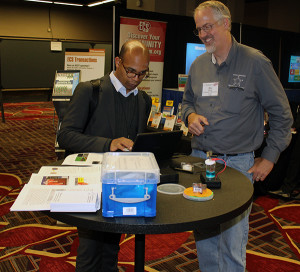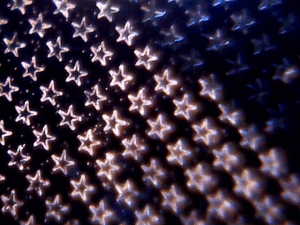
Mike Zach demonstrating his novel NanoFab Lab… in a Box! during the ECS Meeting!
“What I do is simply help develop confidence in students.”
That’s Mike Zach’s mission with his exceptionally novel NanoFab Lab… in a Box!
Looking to inspire young people and help propel them in scientific careers, Zach took it upon himself to develop an affordable, self-automated, easy to use nanolab.
What Zach is doing is allowing students to understand complex science and have a hands-on experience in making patterned nanowires. Typically nanowires need a multimillion dollar lab to be produced, but Zach has streamlined this process in order to give high school-aged students all over the country a chance to immerse themselves in this seemingly limitless science.
“I’m just looking to get more students involved in electrochemistry… in the science,” said Zach.
Not only can students have a hands on experience with the nanolab’s included optical microscope and potentiostat, but the entire program also allows students to easily understand the concepts behind the science though videos and photos.
“I don’t want these students to think they can’t do science when they can get started in cutting-edge science in their classrooms,” said Zach.

Using very simple instrumentation such as included with the NanoFab Lab … in a Box! most anyone can grow patterned nano or microstructures with very little experience. Here, after a couple of minutes using a simple electrical power supply, we grew some wires.
And nanowires are a very exciting realm of science. With a bundle of a million of these nanowires not even comprising the thickness of a single strand of spider’s web, these complex wires have almost limitless potential. These ultra-tiny structures could impact the safety and efficiently of some of the biggest structures we have.
Zach hopes that he can have between 10,000 and 30,000 nanolabs in schools within the next three years. His nonprofit, Echem Nanowires, has been put in place to help make this goal achievable.
He hopes that his development not only inspires the youth, but also helps propel the future of nanowires and invigorates the youth’s interest in STEM related careers.
“This is serious science happening,” said Zach. “This is more than just a magic show.”

